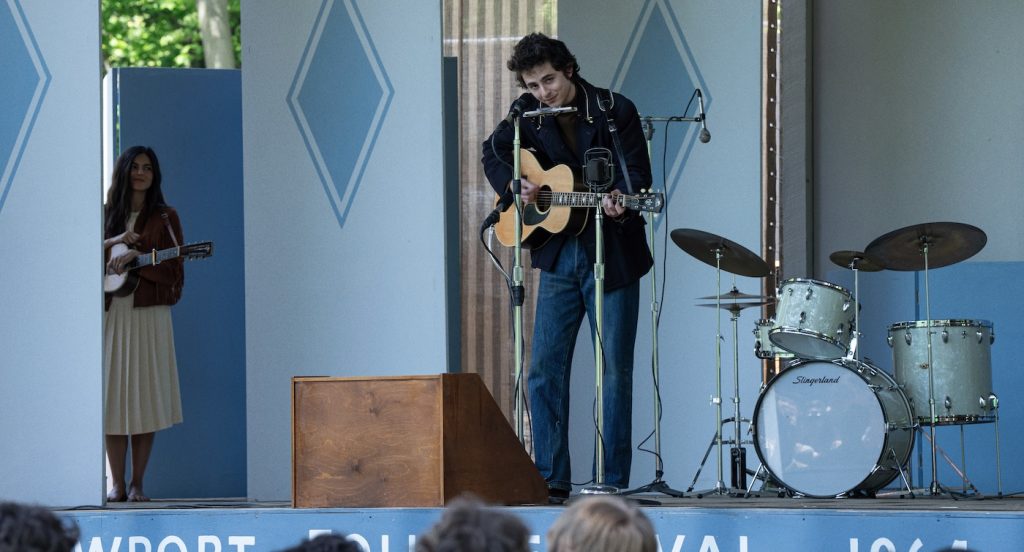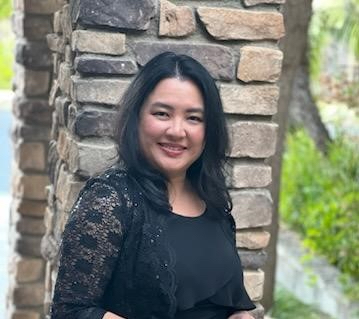Electric Shock: How “A Complete Unknown’s” Oscar-Nominated Sound Team Re-Created Bob Dylan Going Electric
In the first part of our conversation with the Oscar-nominated sound team of James Mangold’s music biography A Complete Unknown, they talked about delivering an intensely music-centric film without using playback and differentiating between the soundscapes of 1961 New York, when Bob Dylan (an immaculate portrayal by Timothée Chalamet) first arrives in the city, and four years later towards the end of the film. Now, we continue the discussion with sound mixer Tod A. Maitland, supervising sound editor Donald Sylvester, supervising music editor Ted Caplan, and re-recording mixers Paul Massey and David Giammarco on how they recreated the famed 1965 Newport Folk Festival and kept the story feeling raw and real.
Let’s jump right into the 1965 Newport Film Festival, where Bob performed with electric instruments for the first time, and it was very controversial.
Caplan: They filmed that almost like a concert, which gives it so much life and authenticity. They did three 30-minute straight passes, starting with the Texas Work Song Group all the way until Timmy sings, ‘It’s All Over Now, Baby Blue.’ That’s all done live, filming with multiple cameras to pick up all the angles. It’s like capturing a real concert and cutting it together rather than doing a bunch of close-ups and catching everyone’s coverage separately. That gave it a real, authentic feel.
How did that raw feeling of being at a live show translate from the recordings to the screen?
Caplan: It’s such a tricky sequence because it has to have a build, but it also has to feel big and exciting right from the beginning. The real brilliance of what Paul [Massey] pulled off was to have it hit you hard from the beginning and still feel like it’s getting bigger, louder, and rowdier as it goes without hurting the audience. Using a mix of delays, EQs, and compression, he brought to life the space, intensity, and excitement of the music at Newport ‘65 in particular, but also throughout the movie. He does it seamlessly so it feels like they belong.
Massey: The first song, ‘Maggie’s Farm,’ needed to be the biggest and loudest performance in the film up to that point. But then he played two more electric songs that needed to be elevated and not flatlined. I didn’t want to do that simply with level, making them louder, so I increased the bass elements, emphasized the PA with reverbs and delays, and generally increased the intensity by changing the richness and colors of the instruments and vocals. This way, the mix didn’t need to get crazy loud, but the intensity of the performance was ramped up. Throughout this performance, the crowd and music had to play off each other, with most of the audience booing and shouting unfavorable comments to contrast Bob’s rebellion and desire not to be swayed from the music he wanted to play.

What was it like to cut multiple live-to-camera performances into that one sequence?
Caplan: We need to give a lot of credit to our picture editors [Andrew Buckland and Scott Morris], who had to cut picture and sound with this. I worked with them to make sure we could tell the story and keep the music in time, which is tricky when you’re not using a click track. Usually, you have something very tight to work with, but since there’s so much flexibility in those tracks, it took a lot of detailed work sitting with them. They put together an amazing performance that feels seamless, even though we had to cut out a few verses to trim it down. It was important to make sure that it felt like you were there watching a live show and it wasn’t just a needle drop. We also had the crowds reacting, which Don can talk about.
Sylvester: It was a team effort to create these crowds in different situations. The story about Bob includes how the crowds responded to him, and there were a lot of different reactions to him throughout his career. The film shows his introduction to the world and how quickly they embraced and idolized him. A lot of these crowds were not on the set, so they had to be recreated. Luckily, because Tod [Maitland] gave us so many tracks to choose from, we had a good basis of what the actual crowds were doing on the set, so we could embellish that. We did it in many layers. We started with the practical crowds, the 200 people in the first few rows who were really there. Then, I added another layer with the loop group with 15-20 people, and we did multiple passes of that. But it’s never going to sound like 15,000 people. So, I needed Dave to bring out the three-dimensional library sounds of crowds to make it sound like what we’re expecting at that moment, which is not easy to do because there are a lot of crowds out there in the world. Dave, you can tell us how you found those crowds.
Giammarco: Tod gave us great recordings of crowds; that was the base. I separated what he had between positive reaction, negative reaction, and close-up groups, all of which would be supported by other effects of crowds. Then, I used a lot of that to pepper bigger crowds throughout. We manipulated those sound libraries to do what we needed. Sometimes the audience had a negative reaction in a close-up or a wide shot, another audience might be more enthusiastic. So, it was manipulating the crowds with some plug-ins and things and building it so we had big crowds for the big concerts, negative big crowds, positive big crowds, and close-up crowd reactions that I could raise, lower, move, or shift in the final mix. I had crowds of different sizes on different faders to control how that crowd could ebb, flow, and react. Then, Don’s crowd and group would be the topping that punctuated and accentuated what we were seeing. We tried to have authentic reactions that matched what we’re seeing on the screen.
For younger audiences who may not be as familiar with Dylan’s music, this film immerses the viewer in that world.
Maitland: It was kind of the same way on set. What Jim [Mangold] really wanted was to create an environment that was as real as possible for the actors. So, we had everything going on at the same time. Normally, for post-production, I would try to get all the different sound pieces separate, but Jim wanted this movie to be done as if it were a live show. For example, on the streets, we had those musicians playing ‘Puff, the Magic Dragon,’ the opera singer, a car going by, and people yelling in the streets. We even added sirens to create more energy. We also did that with the Cuban Missile Crisis scene. Terence put together a soundtrack that we played on set to go along with Walter Cronkite and the TV news to give the actors more of a feeling of panic. I know that made it much more difficult for my friends in post, but it created a really great environment. Normally, we’re always trying to get everything as clean as possible, but on this one, it was just about servicing the actors, which was very interesting.
Sylvester: That was one of our goals in creating this world from 1961-1965. Many people watching this film haven’t lived in that part of the world at that time. What we like to do is create a world that you’ve never been in, but you feel like you’re immersed in it. We were just creating the Village of 1961, the Village of 1964, or a concert that you’ve always wanted to attend. And now you’re in it! I’ve had a lot of people come up to me and say, ‘Wow, I grew up in New York, and I think your New York sounds great! It just sounds like what I remember.’ It’s in the way it’s been mixed; the way we put in the crowd sounds like I’m actually at the concert. This is what we’re trying to do—we want people to feel like they’re in the scene.
Maitland: What you guys did in post is really one of the best post jobs that I’ve seen. On some music-based films, the temptation is sometimes to make it bigger and shinier. Films that use the pre-records feel very polished and clean, whereas this film, as Don said, is very real. You feel like you’re there, and that was our goal. This movie stayed real; it stayed raw.
Nominated for eight Oscars this year, A Complete Unknown is playing in theaters and available on PVOD.
For more on A Complete Unknown, check out these stories:
“A Complete Unknown”: Orchestrating 60+ Live Performances for Oscar-Worthy Sound
“A Complete Unknown” Costume Designer Arianne Phillips on Channeling the Bob Dylan Mystique
Featured image: Timothée Chalamet in A COMPLETE UNKNOWN. Photo Courtesy of Searchlight Pictures. © 2024 Searchlight Pictures All Rights Reserved.



